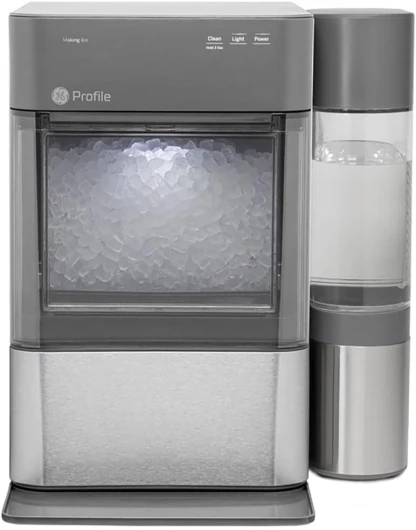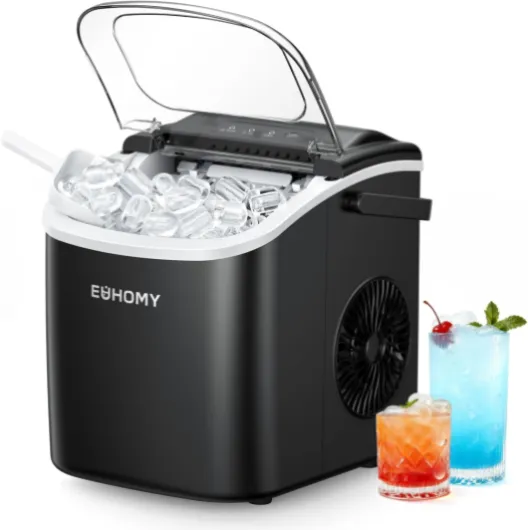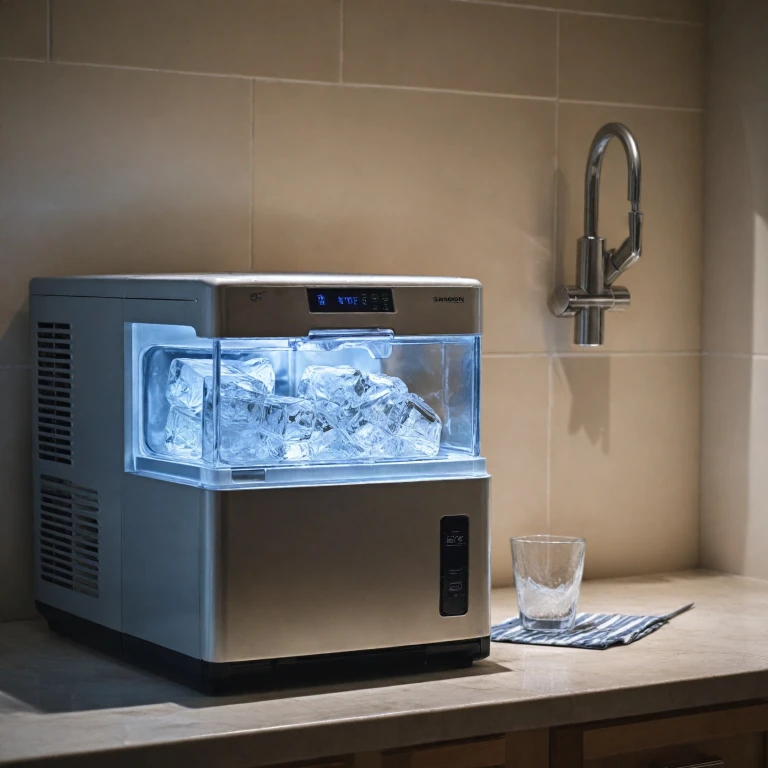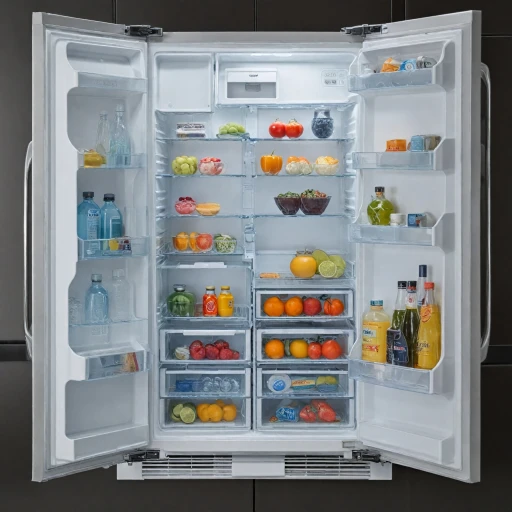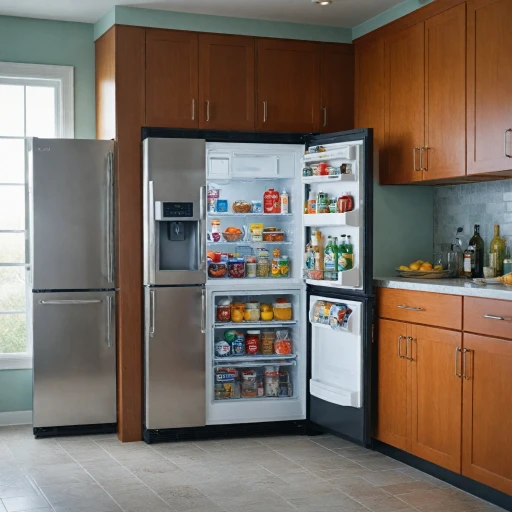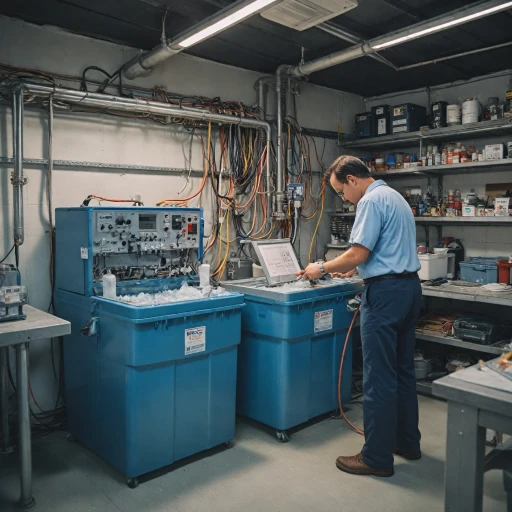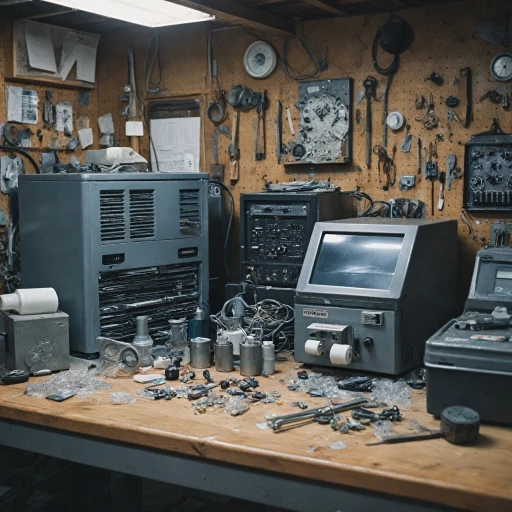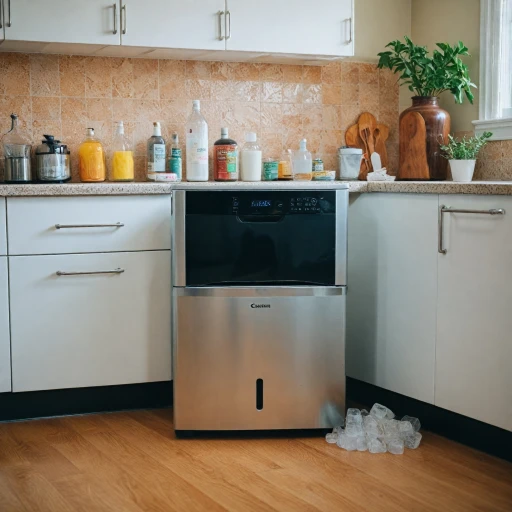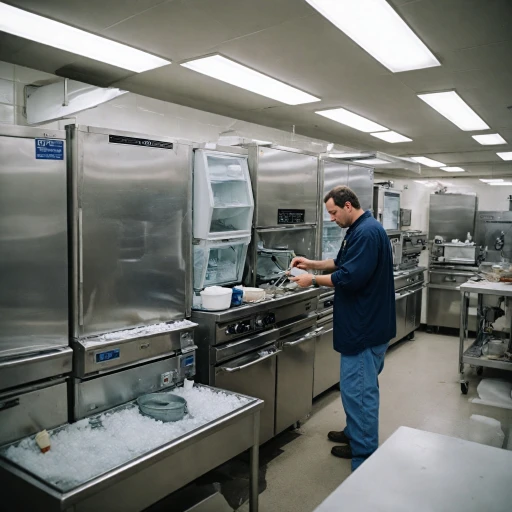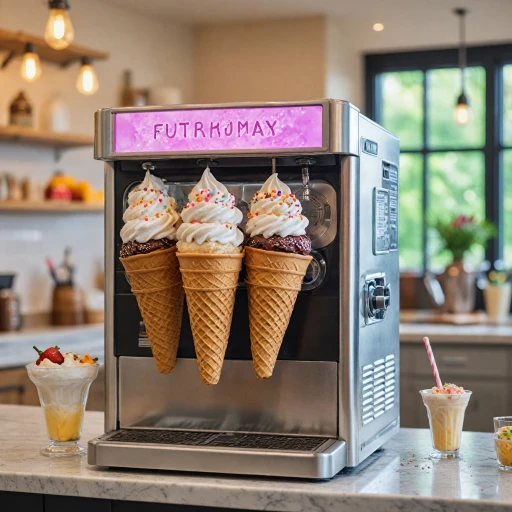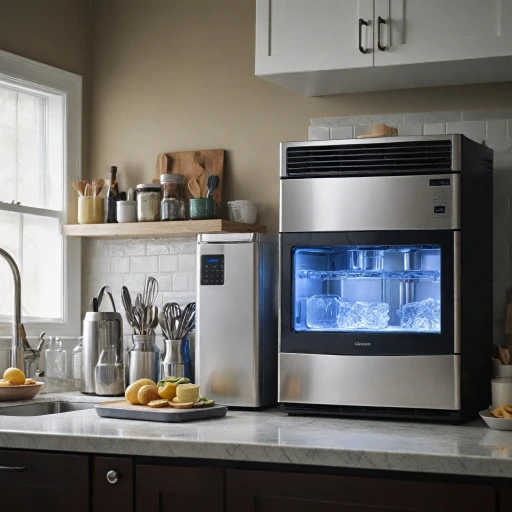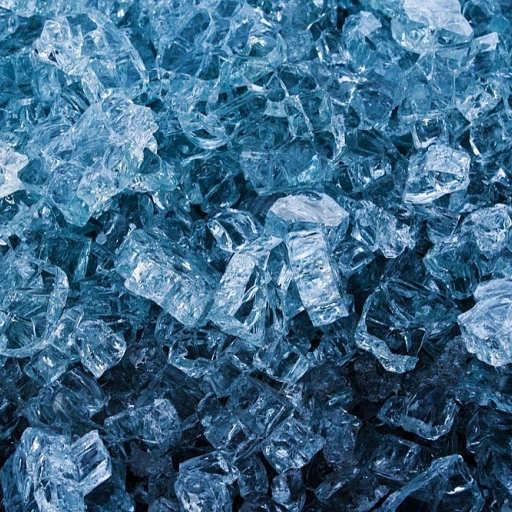
Understanding Common Problems with GE Profile Ice Makers
Identifying Common Ice Maker Problems
The GE Profile Ice Maker is a popular choice among homeowners due to its efficient ice making capabilities. However, like any appliance, it may occasionally experience issues that disrupt its performance. Recognizing these common problems can help you troubleshoot effectively, improving your appliance repair process.- Ice Maker Not Producing Ice: If your ice maker isn't making ice, it may be due to a malfunctioning water supply line or a blocked water filter. Check to ensure the water supply is properly connected and that the water inlet valve is allowing water into the system.
- Slow Ice Production: Sometimes, the issue could be as simple as the freezer temperature being too high. Adjust the temperature to the recommended settings to expedite ice production.
- Ice Dispenser Not Working: If the ice maker is producing ice but it’s not dispensing, the problem could lie in the dispenser switch. Ensure that the switch is functional and no ice obstruction is present.
- Frozen Water Line: Occasionally, water in the line might freeze, causing a blockage. Regular maintenance and cleaning of the appliance can minimize this issue.
Checking the Power Supply and Connections
Assessing Electrical Supply and Connections
A prominent factor that could affect your GE Profile ice maker's functionality is its power supply. An ice maker relies on a seamless electrical current to kickstart the ice making process. To ensure your refrigerator appliance is adequately powered, follow these steps:
- First, verify that the refrigerator is plugged in. A dislodged plug can lead to an unexpected halt in ice production. Take a moment to secure the power plug in its outlet.
- Next, check the circuit breaker or fuse box. Ensure that the breaker associated with the refrigerator isn't tripped and replace any blown fuses.
- Inspect the power cord for signs of damage. Frayed cords can interrupt the electrical supply, preventing the ice maker from working effectively.
Once these issues have been assessed, observe if the dispenser switch is functioning correctly. If pressing the switch doesn't trigger ice dispensing, the switch may need replacing.
Meanwhile, ensure the power setting of your freezer is appropriately adjusted. The ideal freezer temperature is crucial for consistent ice cubes formation, aligning with the importance of freezer temperature settings discussed in other sections of this guide. By methodically reviewing these aspects, you might identify the root cause hindering your ice maker's performance, potentially avoiding the need for pricey appliance repair.
For cases where parts need replacing, see our guide on finding the best ice machine parts locally.
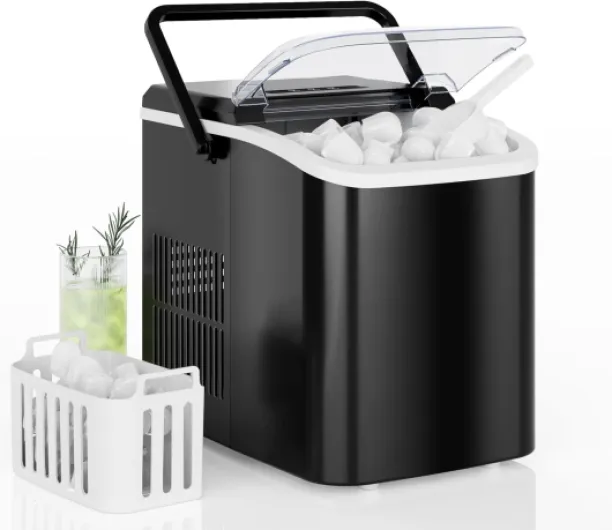
- + Fast Ice Production: 9 bullet ice cubes in just 6 minutes
- + Self-Cleaning Function: Easy maintenance
- + Portable: Ideal for home, kitchen, RV, and camping
- + Compact Design: Saves space on countertop
- + Quiet Operation: Doesn't disturb your environment
Inspecting the Water Supply Line
Evaluating the Water Line and Connections
One essential aspect of maintaining your GE Profile ice maker is inspecting the water supply line. If your ice maker is not producing ice as expected, the issue might stem from the water not reaching the appliance effectively.
- Inspect the water line: Ensure that the water supply line is securely connected to both the refrigerator and the water source. Any loose connections can interrupt the steady flow of water, affecting ice production.
- Check for kinks or leaks: The water line should be free of kinks or damage. Leaks in the line can prevent the ice maker from making ice efficiently and might lead to water pooling around the refrigerator.
- Verify the water filter: A clogged water filter can restrict water flow, impacting ice maker performance. You should check the filter regularly and replace it according to the recommended schedule to maintain optimal ice production. Note that a faulty filter may also lead to irregular ice cube sizes.
- Assess the water inlet valve: The water inlet valve can sometimes become clogged or may require replacement over time. This valve controls the flow of water into the ice maker and freezer compartments, so ensure it is functioning properly by checking for any blockages or signs of wear.
By keeping a close eye on the water supply line and related components, you can prevent disruptions in ice making and ensure your ice dispenser remains in top working condition. Regular maintenance and addressing any issues promptly will help you avoid needing extensive repairs in the future. For effective cleaning solutions, incorporate routine inspections into your appliance maintenance plan.
Cleaning and Maintaining Your Ice Maker
Regular Cleaning for Optimal Ice Production
Keeping your GE Profile ice maker clean is crucial for maintaining its efficiency and ensuring it continues producing ice effectively. Over time, mineral deposits and debris can accumulate, affecting the water supply and ice quality. Regular cleaning helps prevent these issues and extends the lifespan of your appliance.
Steps to Clean Your Ice Maker
- Turn Off the Ice Maker: Before starting, make sure to switch off the ice maker to ensure safety.
- Empty the Ice Bin: Remove any remaining ice cubes from the bin. This will give you a clear view of the interior and make cleaning easier.
- Clean the Ice Bin: Use warm, soapy water to wash the ice bin. Rinse thoroughly and dry it completely before placing it back.
- Check the Water Filter: A clogged water filter can hinder ice production. Replace it if necessary to ensure a steady water supply.
- Inspect the Water Inlet Valve: Ensure the water inlet valve is free from debris and functioning properly. This valve controls the water flow into the ice maker.
- Wipe Down the Interior: Use a soft cloth and a mild cleaner to wipe the interior surfaces of the ice maker. Avoid using harsh chemicals that could damage the appliance.
Maintaining the Freezer Temperature
Ensure that the freezer temperature is set correctly, as it plays a significant role in ice production. If the temperature is too high, the ice maker may not produce ice efficiently. Adjust the settings as needed to maintain optimal ice-making conditions.
Schedule Regular Service
Consider scheduling regular maintenance with a professional appliance repair service. They can check the appliance for any underlying issues and ensure that all components, including the dispenser switch and water inlet, are working correctly. This proactive approach can prevent costly repairs down the line.
Resetting Your GE Profile Ice Maker
Restoring Functionality: Steps to Restart Your Appliance
If your GE Profile ice maker is not producing ice, or the refrigerator dispenser is not working as expected, you might need to reset the unit to restore its functionality. Before doing so, ensure you've checked the power supply, water inlet, and temperature as detailed in prior discussions.
Here's a step-by-step guide to help you reset your ice maker, enhancing its chances of returning to optimal performance:
- Power Down and Reboot: Start by unplugging your refrigerator to cut off power to the appliance. Wait for about 1-2 minutes before plugging it back in. This simple reboot can sometimes resolve minor technical glitches and refresh the system.
- Locate the Reset Button: Many GE Profile ice makers come equipped with a reset button. It's often found on the icemaker unit itself, possibly under the ice maker cover or near the water dispenser switch. Refer to your refrigerator's manual for the precise location.
- Press and Hold: Once located, press and hold the reset button for 10 to 15 seconds. Watch for any indicator lights or sounds signifying the reset is in progress. Release the button once you observe these signals.
- Check the Ice Maker's Cycle: After resetting, allow the ice maker a few hours to complete its cycle and start ice production. Monitor the appliance to see if the ice cubes begin filling the tray.
- Evaluate Freezer Temperature: Ensure that the freezer temperature is set to an appropriate level for making ice. Ice production can be hindered by temperatures that are too high or too low.
- Assess Water Inlet Valve: Finally, revisit the water supply line and the inlet valve. Ensure they're not clogged, and the valve is operational. Replacing the water filter as part of regular maintenance can also help maintain efficient ice making.
Resetting your appliance can often resolve minor issues and get your ice maker working again. However, if ice production doesn’t resume, or if the dispenser continues to malfunction, you may need to consider more in-depth appliance repair. In such cases, it's advisable to schedule service with a professional technician for a comprehensive evaluation and repair.
When to Call a Professional Technician
Knowing When It's Time for Professional Help
If you've followed the troubleshooting steps in previous sections and your GE Profile ice maker is still not producing ice or the dispenser switch is unresponsive, it may be time to consider professional assistance. Although there are common fixes for ice production issues such as checking the freezer temperature or inspecting the water supply line, some problems might require more in-depth knowledge or specialized tools that professionals provide.- Persistent Issues with Water Supply or Inlet Valve:
- Complex Appliance Repair Needs:
- Ice Maker Not Working Despite Proper Cleaning and Maintenance:
- Diagnosing Refrigeration Problems:
-logo-retina.jpg)
